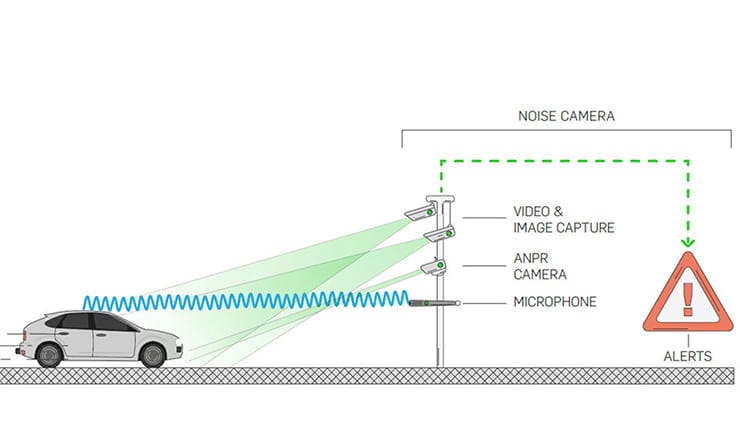Bikes to be targeted by new noise camera trial
By Ben Purvis
Motorcycle Journalist
10.06.2019
You might have thought that with the Brexit saga still rumbling on, the resignation of the Prime Minister and continuing austerity measures still pummelling the NHS and other public services, the Government might have its hands full at the moment. Not so, it seems, as it’s decided now’s the time to introduce a trial ‘noise camera’ system to combat loud exhaust pipes.
The trial will take place ‘at several locations’ according to the DfT, and is inspired by speed cameras – measuring a vehicle’s noise rather than its speed, but still taking a picture and comparing the registration number against DVLA records.
The scheme was launched at the weekend by Transport Secretary Chris Grayling, who’s made headlines for a string of fiascos including the infamous £13.8 million post-Brexit ferry contract that was awarded to a firm with no ferries last December.
He said: “Noise pollution makes the lives of people in communities across Britain an absolute misery and has very serious health impacts.
“This is why I am determined to crack down on the nuisance drivers who blight our streets.
“New technology will help us lead the way in making our towns and cities quieter, and I look forward to seeing how these exciting new cameras could work.”
While he didn’t specifically mention motorcycles, the DfT’s press release left little doubt that bikes are the main target as the only motor industry representative quoted was the Tony Campbell, CEO of the Mororcycle Industry Association. He said: “With growing pressure on the environment, including noise pollution, illegal exhausts fitted by some riders attract unwanted attention to the motorcycle community and do nothing to promote the many benefits motorcycles can offer.
“All manufacturers produce new motorcycles that follow strict regulations regarding noise and emissions and we welcome these trials as a potential way of detecting excessive noise in our community.”
The DfT goes on to say that noise pollution is linked to heart attacks, high blood pressure, stress and type 2 diabetes. It says that the Government has commissioned a single prototype noise camera, and that the test will take place at several locations over the next seven months. If successful, it says it will recommend the system is further developed.
However, it fails to address a host of problems with the idea of using a noise camera. Most important, perhaps, is the fact that noise limits aren’t a one-size-fits-all blanket like speed limits, and are subject to a host of variables that make a noise camera alone virtually useless as an enforcement tool.
While cross-referencing with DVLA records means it should be able to work out what type of vehicle each number plate is attached to, and therefore which set of noise limits should apply to it, the camera won’t be able to replicate the noise testing required to gain road-going type approval.
For instance, type approval motorcycle noise testing relies on a microphone at a specific distance from the bike, at a particular angle and height, and with the engine revving at a specific speeds. There are also strict requirements on background noise levels and averages are taken from multiple tests to reach a result. Even the simplified procedures used by police for roadside noise testing follow strict guidelines about engine revs and microphone position.
At the moment, the DfT hasn’t revealed what it plans to do as and when its trial camera spots a noisy vehicle. Similar schemes in other countries have led to little more than letters being sent to the vehicle owners.
Despite its focus on bikes, it’s worth noting that the DfT’s schematic of the new camera system shows it taking a picture of the front of a car. Who wants to tell them that bikes don’t have front number plates?
Share on social media:
